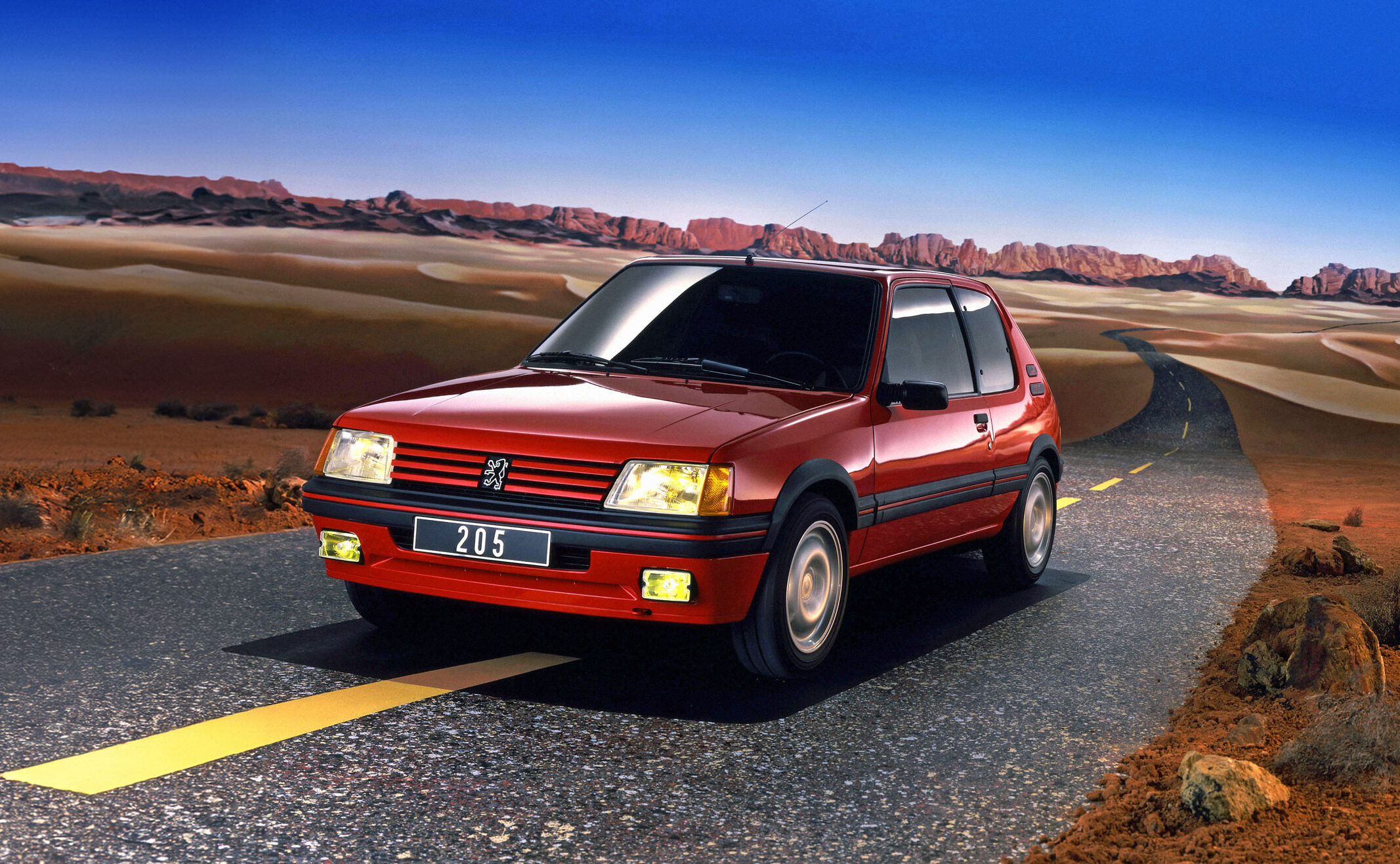The Peugeot 205 GTI is a car that defined the hot hatch era of the 1980s and early 1990s. Launched in 1984, it was revered for its blend of sharp handling, lively performance, and compact dimensions – quickly becoming a benchmark that other manufactuers aimed to surpass. Initially available with a 105bhp 1.6, soon updated to 115bhp, it was joined by a 130bhp 1.9-litre GTI in 1986. Both delivered impressive acceleration thanks to the car’s lightweight construction, with a curb weight of around 850 kg.
The 205 GTI’s nimble chassis, responsive steering, and excellent grip made it a joy to drive on twisty roads, although the edgy rear-end, prone to lift-off oversteer, did take inexperienced drivers by surprise – leading the car’s reputation for being a bit of a handful. It soon earned a cult following.
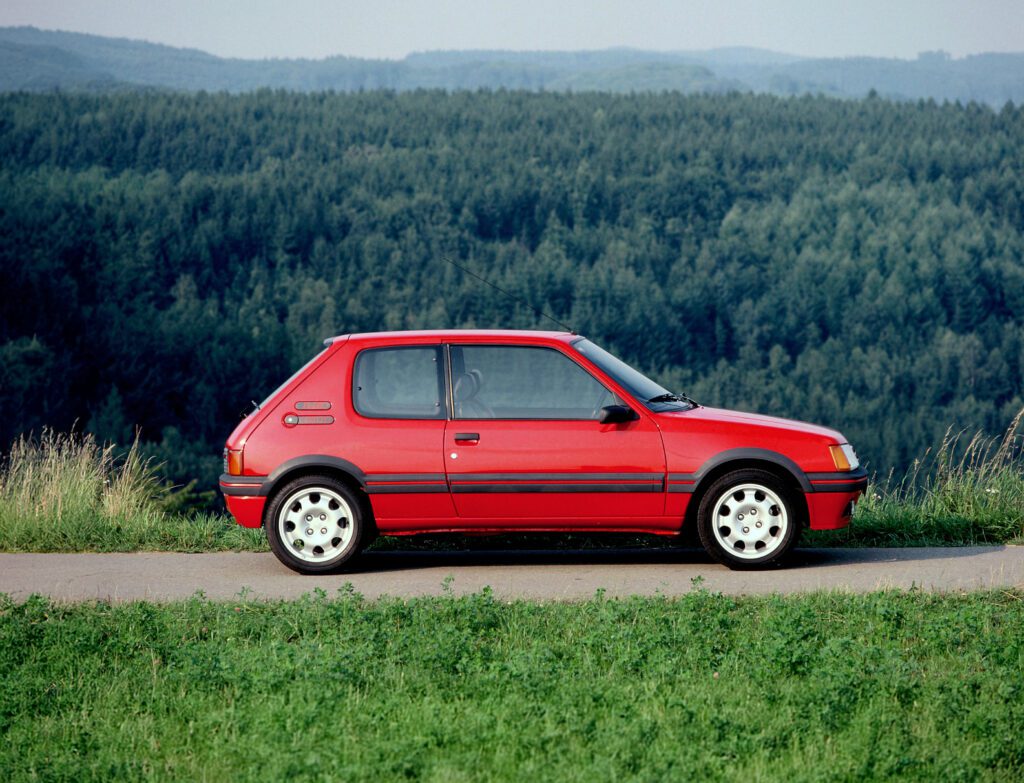
The interior was basic but functional, with supportive seats and a driver-focused layout that emphasized simplicity over luxury. The 1.9 not only added more performance, but 15-inch alloy wheels, half leather seats as well as a leather-trimmed steering wheel. As the top model, it has always been the more desirable model however, the 1.6 is still highly regarded for its purer, slightly more accessible character.
Today, the Peugeot 205 GTI remains a sought-after classic, prized for its driving dynamics and the nostalgic connection to an era when hot hatches were all about lightweight fun. Well-maintained examples are increasingly rare, although with companies like Tolman now offering a restomod version, it’s a car that will become a staple of the classic car universe as time goes on.
The Peugeot 205 GTI, produced from 1984 to 1994, saw several key changes throughout its production, categorised into three main phases: Phase 1, Phase 1.5, and Phase 2. Each phase brought mechanical and aesthetic updates that refined the driving experience and complied with evolving regulations.
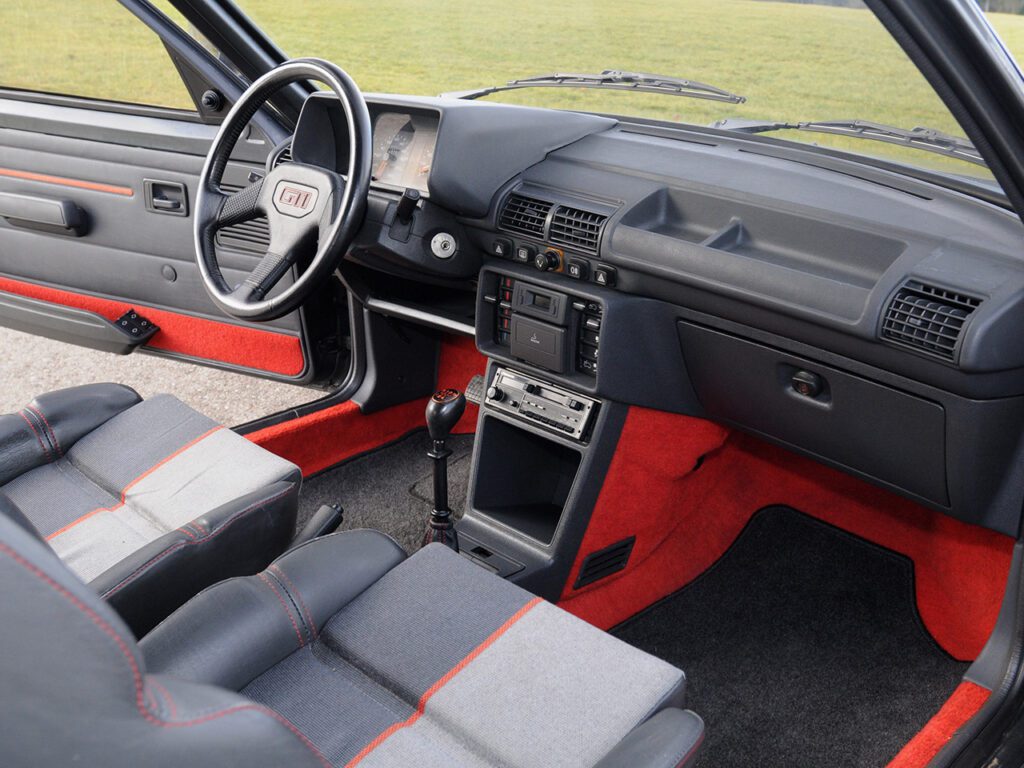
Model guide
Phase 1 (1984-1987)
The original 205 GTI launched in 1984 with a 1.6-litre, 8-valve XU5J engine, producing 105 hp. This engine was paired with a 5-speed BE1 manual gearbox, and the car featured a non-power-assisted steering system. The suspension setup was basic but effective, with MacPherson struts at the front and a torsion beam at the rear. The braking system included front disc brakes and rear drums.
Phase 1.5 (1987-1990)
In 1987, the 205 GTI was updated to Phase 1.5, introducing a tweaked 115bhp 1.6, alongside an even more powerful 1.9-litre XU9JA engine, producing 130bhp and 119 lb ft of torque. This version also brought the option of power-assisted steering, and all were fitted with 15-inch alloys and all-round disc brakes. This phase included a new dashboard design and better interior materials, enhancing comfort.
Phase 2 (1990-1994)
The final iteration, Phase 2, arrived in 1990, bringing further refinements. Externally, Phase 2 models featured updated black bumpers, smoked rear lights, clear front indicators. Inside, the cars received further improvements in material quality, sound insulation, and switchgear. Post-1993 models were fitted with a catalytic converter as standard, hobbling the power somewhat.
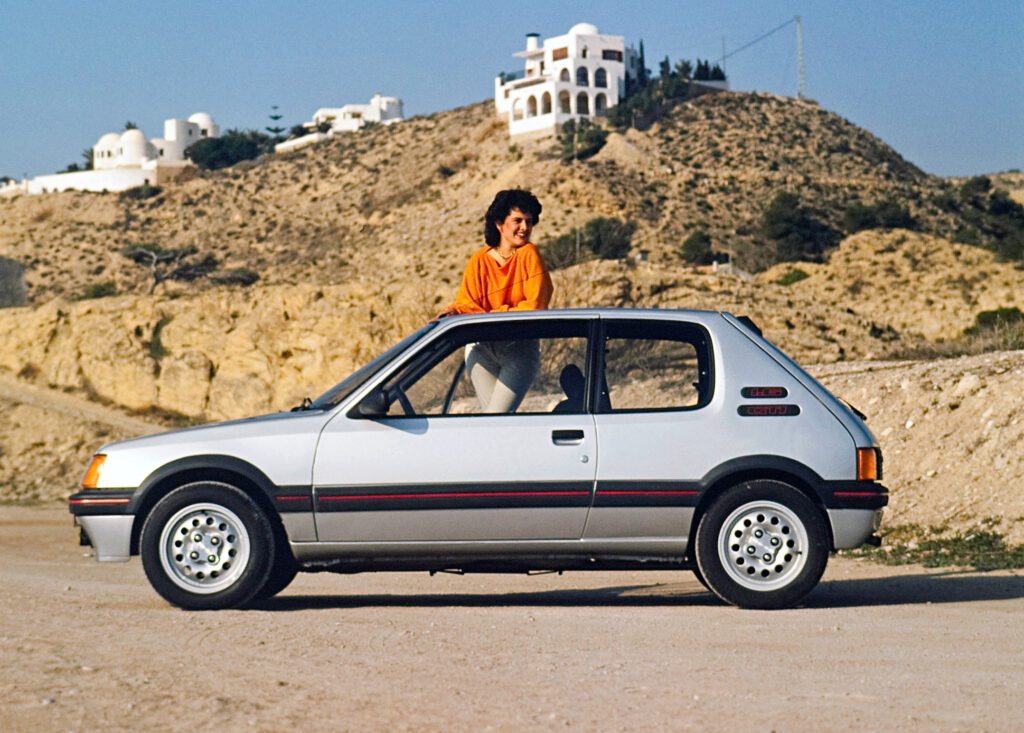
Common Issues
Rust: A major issue, particularly around the sills, floorpans, wheel arches, and boot floor. Thoroughly inspect the bodywork for signs of corrosion.
Electrical problems: The 205 GTI is prone to electrical gremlins, particularly with the lighting and wiring. Intermittent issues can be a pain, as can tracing and renewing any previously bodged repairs. Ensure everything works as it should.
Suspension wear: The suspension components, including bushings, shock absorbers, and rear beam all wear out over time. Ensure it drives well, and if there is any history of a renewed rear beam that it has been done to a high standard.
Oil leaks: The engine is prone to oil leaks. Check the engine bay and undercarriage for signs of oil. Some minor leaks are to be expected, but major leaks are a sign of neglect.
Head gasket failure: A common issue, especially on high-mileage engines. Watch for symptoms like overheating or white smoke from the exhaust. Blue smoke means that it’s burning oil, which is most likely worn out oil valve stem seals.
Interior wear: The interior materials, particularly the seat bolsters and steering wheel, can show significant wear, especially in higher-mileage cars. New seat foam and covers are now available, but are a pricey fix.
Gearbox issues: The BE gearbox can develop synchro problems, leading to difficult gear changes, particularly between 2nd and 3rd gear in particular.
Cooling system: The cooling system, including the radiator and hoses, can become clogged or leak, leading to potential overheating issues. Ensure it’s all in good condition.
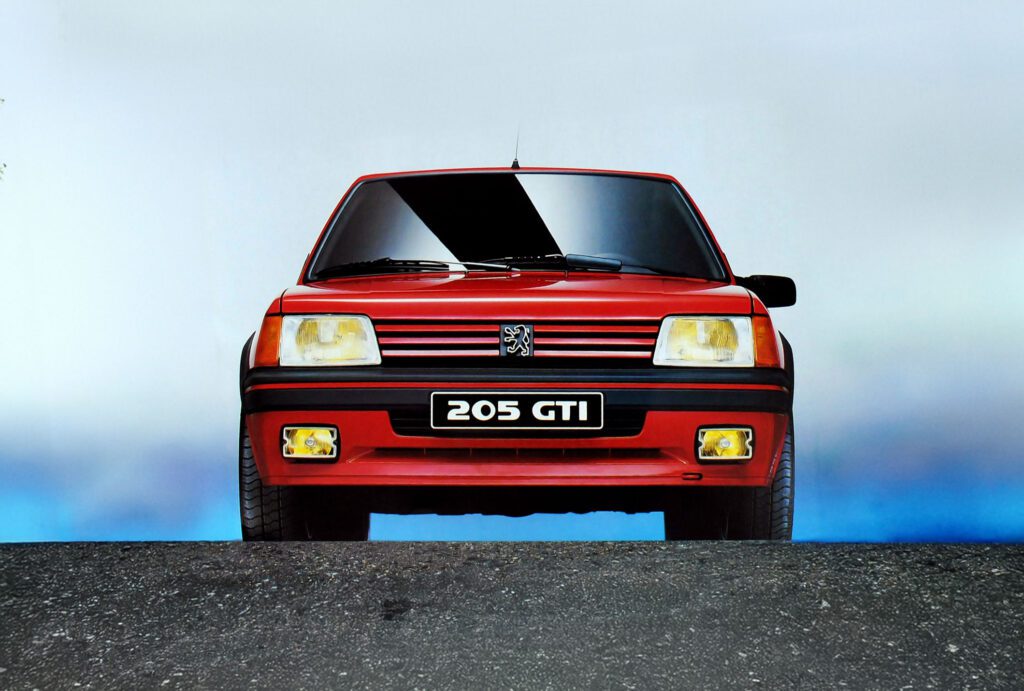
Peugeot 205 GTI price guide
Pricing for the Peugeot 205 GTI has seen a significant rise in recent years, driven by its status as a classic hot hatch icon. Prices vary depending on the condition, mileage, and originality of the car.
| 205 GTI 1.6 prices | |
|---|---|
| Average Condition | £6000 – £9000 |
| Good Condition | £9000 – £12,000 |
| Excellent Condition | £12,000 – £15,000 |
| Peugeot 205 GTI 1.9 prices | |
|---|---|
| Average Condition | £8000 – £12,000 |
| Good Condition | £12,000 – £18,000 |
| Excellent Condition | £18,000 – £25,000 |
Originality is highly valued, so cars with full-service histories and unmodified specifications can command a premium. Limited-edition models, such as the “1FM” or special UK editions, can fetch even higher prices at auction.
Peugeot 205 GTI specifications
| Production Years | 1984 – 1994 |
| Engine | 1580/1905cc Inline-4, 8 valve |
| Power Output | 105/115bhp (1.6)/130bhp (1.9) |
| Torque | 98 lb-ft (1.6)/119 lb ft (1.9L) |
| Transmission | 5-speed Manual |
| 0-62 mph (0-100 km/h) | 8.7 seconds (1.6) / 7.8 seconds (1.9) |
| Top Speed | 118 mph (1.6)/127 mph (1.9) |
Dimensions and weight
| Length | 3705 mm |
| Width | 1570 mm |
| Height | 1360 mm |
| Weight | 850 kg (1.6) / 875 kg (1.9) |
